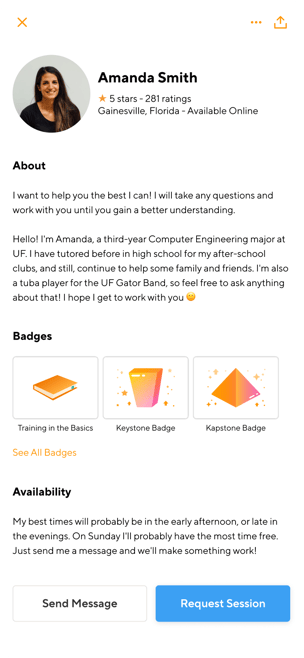Equity and equality are two words that are often used interchangeably, but when it comes to education, they can influence dramatically different outcomes for students. A focus on equality has prevailed in recent decades, with an emphasis on providing the same opportunities and resources to all students. While this may sound ideal, it neglects the reality that every student has a different starting point, and to achieve the same outcome, more resources and support may be needed for some students than others.
Equity seeks to restore this balance – to level the playing field – and peer tutoring is the one of the most effective ways to ensure it. Here are three reasons why.
Increased resources (and access to them)
Traditional tutoring approaches often have any of the following three primary constraints:
- They only exist between traditional business hours.
- They often miss historically underrepresented and underserved populations.
- They inadvertently exclude students because of course restrictions.
For organizations seeking to reduce constraints for students, peer tutoring offers a low-risk, high-reward solution, often at a fraction of the traditional. Why?
- Flexibility. Peer tutoring isn’t restricted to traditional business hours, and therefore offers a valuable complement to existing campus resources, ensuring no student is left behind. Sessions can occur between 9-5, or before or after – whenever the tutor and student agree upon. This also applies to options for online tutoring, demand for which has skyrocketed since the start of the pandemic.
- During the Fall 2021 semester, 53% of Knack Tutoring sessions at the University of Florida occurred outside of traditional business hours.
- Over 90% of peer tutoring sessions conducted on Knack were online in 2021.
- Coverage. Colleges and universities offer hundreds, if not thousands, of courses to students, making it almost impossible for campuses to offer tutoring in every class – and that’s completely understandable. By leveraging a network of peer tutors, institutions can unlock their course catalog by allowing tutors to cover material in whatever courses they received an A- in, or better, thereby reaching students in programs and departments that might not have been able to access tutoring otherwise.
- Personalization. Even today, tutoring carries a stigma that naturally deters many students from seeking the help they need.
 Demand-driven peer tutoring programs, like those employed here at Knack, can be custom-designed to support individual populations, whether that be Pell-eligible, high-DFW, transfer, first-generation, historically underrepresented minority populations, or even members of individual colleges or majors.
Demand-driven peer tutoring programs, like those employed here at Knack, can be custom-designed to support individual populations, whether that be Pell-eligible, high-DFW, transfer, first-generation, historically underrepresented minority populations, or even members of individual colleges or majors.
Making tutoring human
One of the most meaningful benefits a peer tutoring program offers is making tutoring relatable. With demand-driven peer tutoring programs, campuses can give students an opportunity to receive help from a fellow student who, quite literally, walked in their shoes. This not only helps make the experience less intimidating, but it can naturally support improving achievement gaps among campus populations.
Interested in learning more about how demand-driven peer tutoring programs can help you move the metrics that matter most? Fill out the form below and a member of our team will be in touch.

 Demand-driven peer tutoring programs, like those employed here at Knack, can be custom-designed to support individual populations, whether that be Pell-eligible, high-DFW, transfer, first-generation, historically underrepresented minority populations, or even members of individual colleges or majors.
Demand-driven peer tutoring programs, like those employed here at Knack, can be custom-designed to support individual populations, whether that be Pell-eligible, high-DFW, transfer, first-generation, historically underrepresented minority populations, or even members of individual colleges or majors.